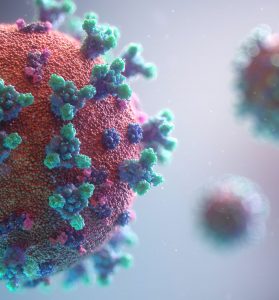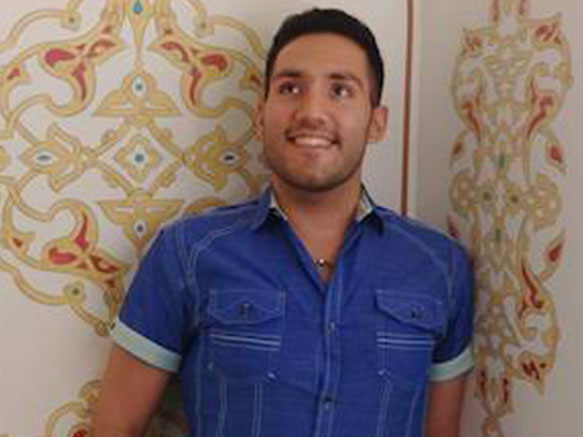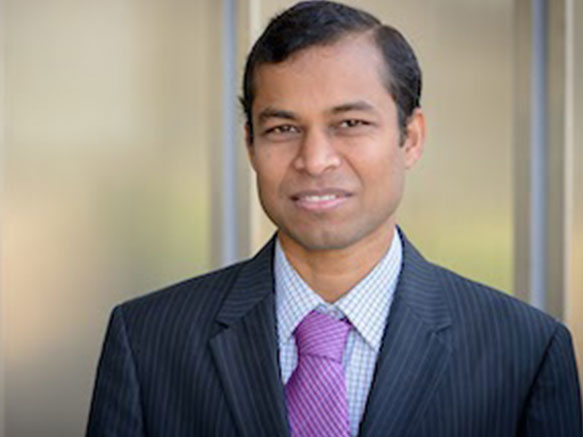 By Josh Baxt
By Josh Baxt
Nobody was prepared for the SARS-CoV-2 virus. Suddenly, businesses closed, schools were shut down and people had to find new ways to fulfill their obligations.
The UC San Diego Department of Computer Science and Engineering was on top of it from the start, adopting creative ways to keep classes, conferences and other meetings afloat. But after the initial rush to problem-solve, CSE faculty began assessing how the response could have gone better and bringing in additional tools, both new and old, to address future outbreaks.
A Blank and Endless Void
Imagine giving a presentation and the audience only responds with blank stares – no reaction whatsoever. That’s been a common occurrence for teachers worldwide, as they adapt their classes to Zoom and other online platforms. They put in the work, but they can’t always convince students to turn on their cameras.
“When I’m presenting the lecture content, it feels like I’m talking into a void,” said one professor.
To better understand online classroom dynamics, CSE researchers studied UC San Diego faculty and student attitudes towards online classes. The paper was presented at the Association for Computing Machinery’s Conference on Human Factors in Computing Systems.
“We wanted to understand instructor and student perspectives and see how we can marry them,” said Associate Professor Nadir Weibel, PhD, senior author on the paper. “How can we improve students’ experience and give better tools to instructors?”
The project was initiated by PhD student and first author Matin Yarmand, along with co-authors Scott Klemmer, PhD, a CSE professor, and Carnegie Mellon University PhD student Jaemarie Solyst. The team conducted faculty interviews and distributed student surveys to collect their experiences.
They found faculty were often discouraged by the lack of feedback. Without visual cues, they weren’t sure if they were getting their points across. On the other side, students resisted turning on their cameras and were often muted. Many didn’t want their peers to see them; others were eating or performing unrelated tasks; some were unaware the video feedback helped instructors; and a hardcore few saw no need to turn their cameras on at all.
Students felt awkward asking questions on video but liked the chat functions, which made them more likely to participate. Also, online classes lack opportunities for short conversations and questions, the “hallway time” that is so common before and after live lectures.




The researchers posed several potential solutions. Technology that reads social cues, such as facial expressions or head nods, could provide invaluable feedback for instructors. Video feeds could be refined to make instructors the center of attention, as they are in real-life classrooms, rather than one of many co-equal video boxes.
Increased chat use could improve both online and in-person classes, as some students have always been reluctant to call attention to themselves.
Weibel and colleagues have also been exploring how virtual reality environments could improve online learning. Using Gather, they tested an instructor lounge, in which students and faculty could gather before, or even during, a class.
The team is also working on a natural language processing bot that could make the experience more interactive. If two people are struggling on the same assignment, it could connect them to improve collaboration or point to additional resources on Canvas.
The authors believe these and other refinements could make online learning more effective, as it is unlikely to go away entirely.
“Some classes will be back in person,” said Weibel. “Some will be only online and some will be hybrid, but I think online learning is probably here to stay.”
The Show Must Go On
If researchers conduct a study, but nobody ever hears about it, does that information exist? Conferences are essential components to advance science, but converting live meetings to virtual ones can be challenging.
Enter Whova. The virtual conference platform was founded in 2014 by CSE professor and Qualcomm Endowed Chair Yuanyuan (YY) Zhou and colleagues, though they didn’t have COVID lockdowns in mind at the time.
“It’s really important for graduate students to network at conferences to advance their careers,” said Zhou, “but they really don’t know how to meet people. Whova was designed to help them make those connections.”
CSE was one of Whova’s first clients, and then the service went viral to other universities, companies and even government agencies, including NASA. “I was so nervous,” said Zhou. “I thought, please don’t crash, please don’t have a security issue.”
Whova continued to grow, steadily adding capabilities, until COVID hit, leading to sudden, massive evolution. At first, events were simply cancelled, but then the community began to adapt, and Whova was a big piece of that, integrating with Zoom, WebEx, Microsoft Teams and other virtual meetup platforms.
But it was more than simply pivoting the technology. Whova created webinars and other trainings to teach conference organizers how to produce more seamless online meetings. Interest was intense.
“We launched a webinar in March 2020 and about a thousand people showed up,” said Zhou. “And then word spread: Whova knows how to do virtual events.”
Whova has helped thousands of events go virtual – in June 2021 alone they supported 680.
“The first two months of the pandemic, people just froze,” said Zhou, “and then they started looking for solutions. We found the majority of conference organizers weren’t that tech savvy, but with a little help, they adopted the technology quite rapidly.”
Preparing for the Next Pandemic
Viruses do not act alone; they co-opt their hosts’ normal biological mechanisms to create more viruses. In turn, the host’s immune system senses the viral invasion and takes action to stop it.
Understanding this response, on a molecular level, could provide a leg up on the next viral outbreak, identifying infections and possible therapeutic interventions.
In a paper published in EBioMedicine, researchers at UC San Diego, Scripps Research and other institutions detailed their efforts to identify a molecular signature for the body’s viral response and how they ultimately found two.
“We used machine learning to discover an invariant host response, which doesn’t change, regardless of the virus,” said Debashis Sahoo, PhD, assistant professor in CSE and the Department of Pediatrics and first author on the paper. “This model works in every possible situation.”
The key was measuring gene expression – which genes are turned on and off – following viral infection. The team investigated the host response to HIV, SARS, MERS, swine flu and other pathogens, compiling a comprehensive gene expression data base.
They then used machine learning to identify a 166-gene viral signature that indicated infection. Equally important, they found a 20-gene signature that predicts disease severity.
“We tested these gene expression signatures on COVID-19 and they were perfect,” said Sahoo. “The first data set perfectly separated the infected and uninfected samples. They were able to predict both the infections and the severity.”
These discoveries could come in handy for future outbreaks. Disease severity markers could help identify which patients will need the most robust treatments and support public health officials as they allocate resources.
In addition, successful drugs diminish these gene expression signatures, offering a promising way to identify treatments during an emerging pandemic.
“This model can help us predict host responses across all pandemics,” said Sahoo, “as well as predicting potential drug candidates. If a new pandemic emerges, we can deploy this to rapidly identify treatments.”
copyright 2020 – Computer Science & Engineering – University of California San Diego